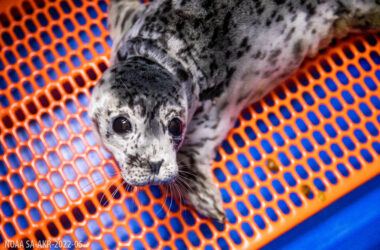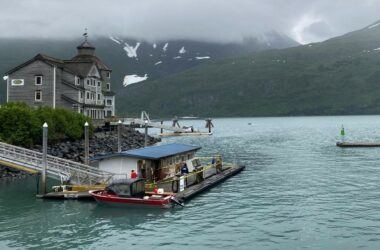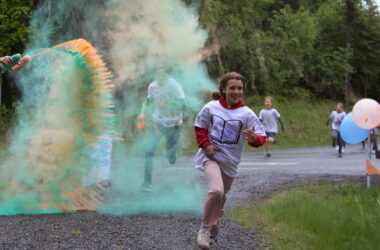The cause of an Alaska wide die-off of the Common Murre, a black and white diving seabird, is unknown however biologists have ruled out Avian Influenza.
Wildlife Biologist Leslie Slater with the Alaska Maritime National Wildlife Refuge in Homer says many local beaches have seen the bird carcasses.
Slater: “The first reports I think began in mid-July or so, maybe even earlier, in the Cold Bay area. We even had one bird in the Sitka sound area back in early July. But it did seem to increase around in late-August or early September in the Kachemak Bay area and Kodiak, there seemed like there were quite a few birds being reported on all the local beaches. It continued at a pretty moderate level, then tapered off but re-surged again in about early to mid-November.”
She reported the state of the birds washing ashore as being very emaciated, or starved.
Slater says Murres starving to death doesn’t take long because of their low body-fat stores but biologists are investigating what could have changed their ability to feed or their food source.
She estimated that a couple thousand birds have washed ashore in the last few months which follows unusual activity by flocks of the common Murres earlier this year.
Slater: “I guess the other sort of interesting thing about the murres in Kachemak Bay this fall was that there have been larger numbers of them coming into the smaller side bays in numbers that have been pretty unusually large. So we were thinking that they must have been following prey but yet they’re still starving so that’s a really odd juxtaposition of those two situations.”
Although die-off cycles of Murres has been seen over the past several years, Slater says the numbers seen over this summer are six times the averages that have previously been observed.
Carcasses from the die-off have been sent to out-of-state government labs and results of what is causing the event could be found as soon as mid-January however may take longer.
Slater urges anyone who sees the bird carcasses on Kenai Peninsula beaches like Anchor Point or the Homer Spit to keep themselves and their pets away.






